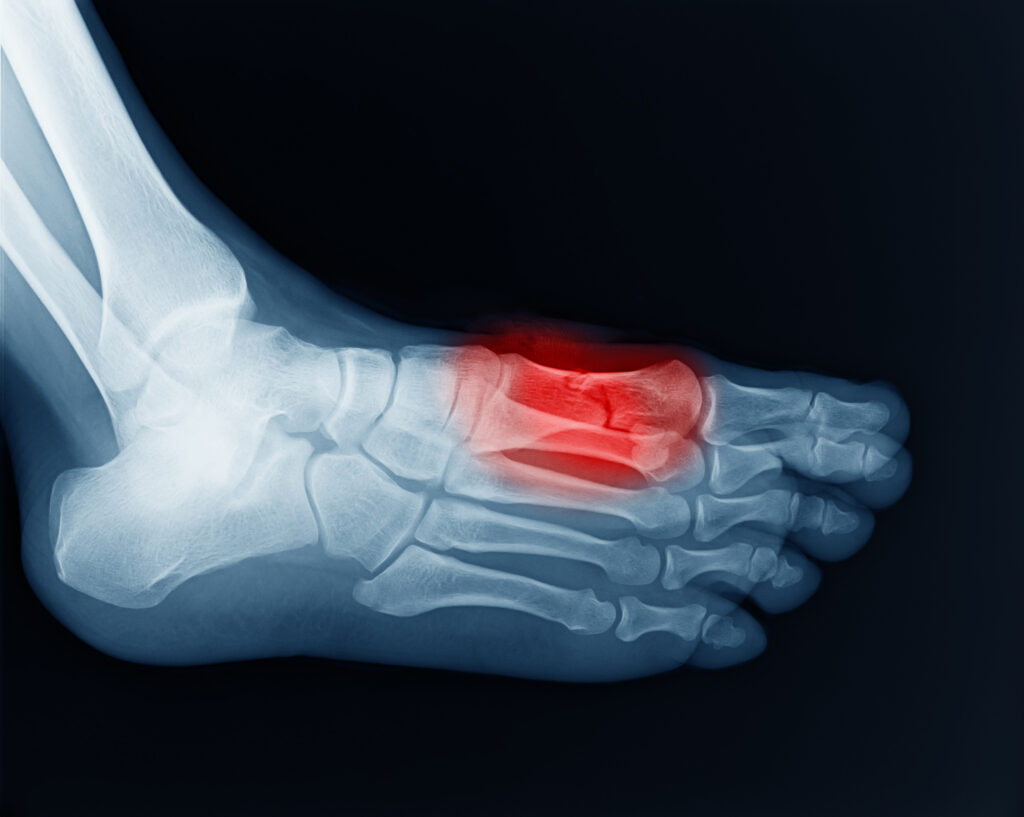What is Sesamoiditis?
When you’re picturing the bones in your foot, you probably imagine a skeletal shape that connects your ankle, foot, and toes. However, some unique bones in the foot aren’t attached to your skeleton at all. These bones, known as sesamoids, can be found in the bottom of your foot. But your kneecap is the largest example of a sesamoid bone.
These distinctive, tiny bones are only about as big as a jelly bean, but they can cause significant pain if something goes wrong. Find out what sesamoiditis is and what you can do about it, so you can better understand what’s going on if you start to experience persistent pain.
Understanding Sesamoiditis
The foot has two small, pea-sized bones known as sesamoid bones embedded in the tendons beneath the big toe joint. These bones help reinforce the tendon and support the height of the big toe. The sesamoids should decrease stress on the surrounding tendons so you can move more comfortably. When the tendons slide over the smooth surface of the sesamoids, these bones also increase the muscle force that the tendons can exert. Sesamoids are unique in that they aren’t attached to any other bones.
There are a few different problems that you may experience with the sesamoids in the foot. One of these is a type of inflammation known as sesamoiditis. This condition occurs if the tendons around the sesamoids become inflamed or irritated.
Signs of Sesamoiditis
Pain is the primary symptom associated with sesamoiditis. You will typically feel this pain in the ball of the foot beneath the big toe. Sesamoiditis makes it difficult to bend or straighten the big toe. You may have trouble bearing weight or walking normally. Swelling, bruising, and redness may accompany this condition as well.
In response to this foot pain, you may find that you’re consciously or unconsciously adjusting your gait to put less weight on that foot. This action can cause you to overcompensate on your other side, creating excess stress on parts of your legs or back.
Diagnosing Sesamoiditis
You should see a healthcare professional whenever you’re experiencing severe or prolonged pain. Your physician will be able to identify sesamoiditis as a likely cause of your pain after examining the type and location of discomfort. During the examination, your doctor may manipulate the big toe slightly or ask you to bend and straighten it to confirm this diagnosis. Pinpointing the area of tenderness and exploring the pain further will help your provider better understand your condition’s nature.
To confirm the diagnosis, you will likely need an X-ray. This scan will determine whether the edges of the sesamoid are still smooth, as in the case of sesamoiditis alone, or whether they’re jagged due to a fracture. Sesamoiditis may occur alongside a fracture, but your doctor needs to understand the full extent of the condition when developing your treatment plan. Other imaging tests such as a bone scan, CT scan, MRI, or ultrasound may help confirm your diagnosis as well.
Possible Causes of Sesamoiditis
Sesamoiditis commonly occurs in people who spend a lot of time on their feet and participate in activities that put pressure on the ball of the foot. These activities include:
- Golf
- Baseball
- Basketball
- Football
- Running
- Tennis
- Ballet
- Step class
Frequently wearing very high heels may also result in sesamoiditis, as this forces you to walk almost exclusively on the ball of your foot. Individuals with flat feet, high arches, overpronation, and gout are at an increased risk for sesamoiditis as well.
Treatment for Sesamoiditis
The first step in treating sesamoiditis is identifying the activity that caused the condition. Since this is a repetitive stress injury, proper treatment begins with eliminating the actions that created the condition. It’s best to keep pressure off the foot as much as possible until the pain subsides. Wearing low-heeled shoes with a cushioning pad under the ball of the foot should ease discomfort some when you must walk. Ice, elevation, and NSAIDs like ibuprofen can start to provide immediate relief for sesamoiditis symptoms.
Your doctor might tape or strap your big toe downward to relieve pressure on the sesamoid bones. In more severe cases, your healthcare provider might suggest a brace. As the tissues heal, you may need physical therapy, which involves practicing a specific range of sesamoiditis exercises to restore your full range of motion. Soft tissue therapy can help your tissues recover as well. This healing process may include moist heat, a gentle tissue massage, or therapeutic ultrasound.
In severe cases, your doctor may recommend a steroid injection to relieve pain and inflammation. If your foot does not respond to the above treatments, you may need surgery. This form of treatment may be more invasive, as it requires the doctor to remove one of the sesamoid bones from the foot.
Other Types of Sesamoid Problems
There are other types of sesamoid problems that can look very similar to sesamoiditis. Your healthcare provider will be able to help you correctly diagnose your condition. A fractured sesamoid bone is another potential issue you may encounter with these tricky bones. A chronic sesamoid fracture creates longstanding pain that may come and go. An acute sesamoid fracture occurs due to trauma, producing sharp, immediate pain.
Turf toe is another common issue relating to the sesamoid bones. This injury occurs when the toe extends beyond its usual range. You may feel a pop at the moment of injury. Turf toe can cause damage to the tissues surrounding the sesamoid or even result in a fracture of the sesamoid bone.
If you’re experiencing ongoing foot pain, it’s essential to speak to a qualified podiatrist as soon as possible. Foot conditions left untreated may worsen and begin to affect other parts of your body, such as leg or back pain, as you attempt to compensate for the injury improperly. Dr. Schoene can provide outstanding podiatric care, including a conclusive diagnosis of your injury and a comprehensive treatment plan that will help end your foot pain and restore you to health.

